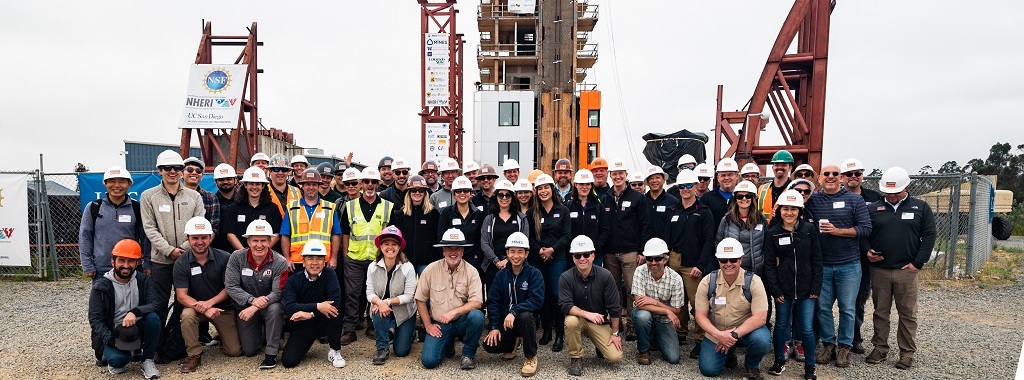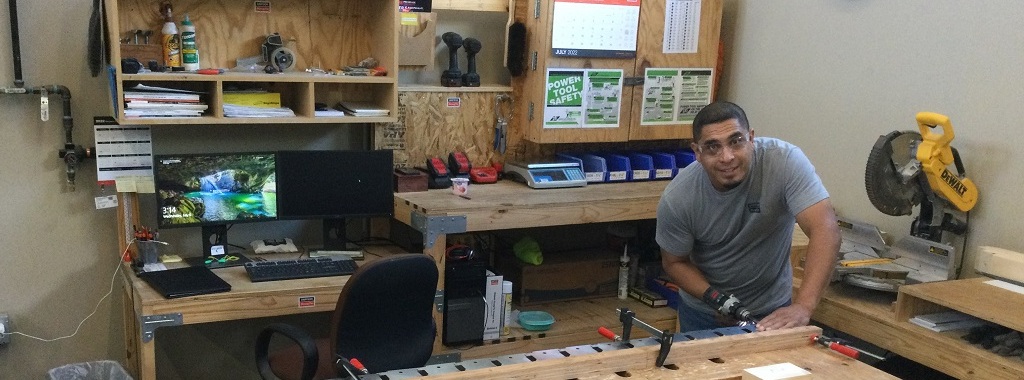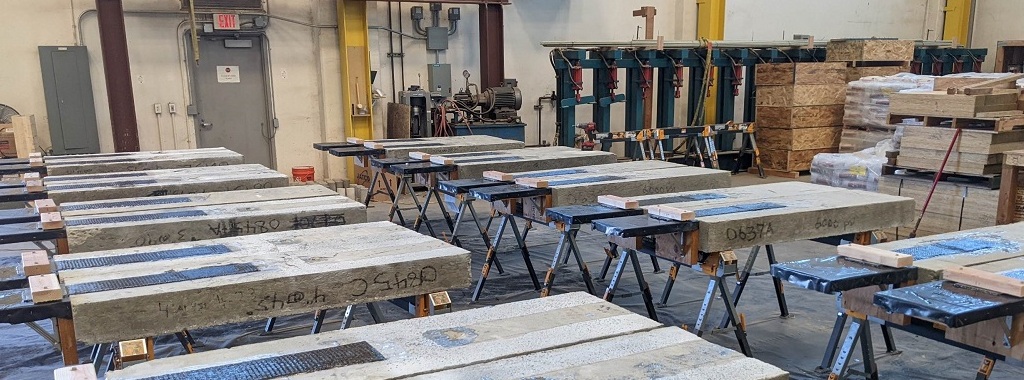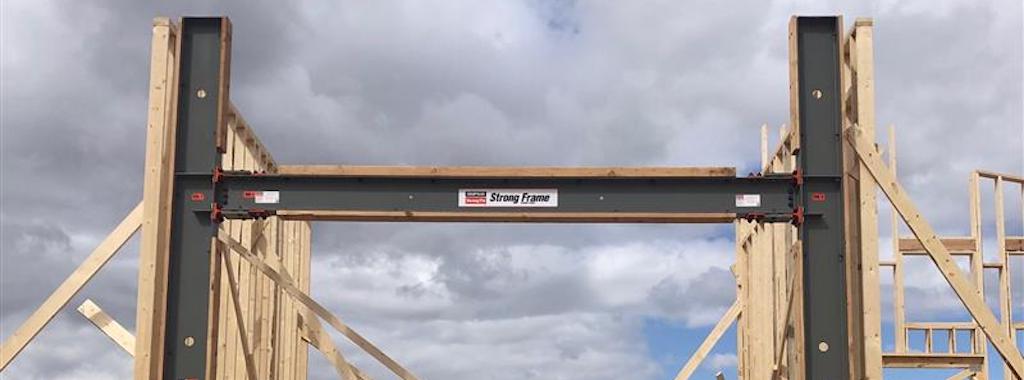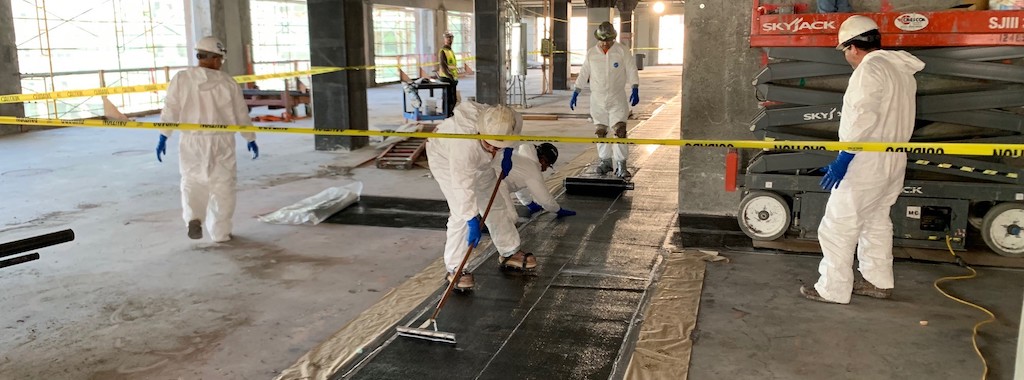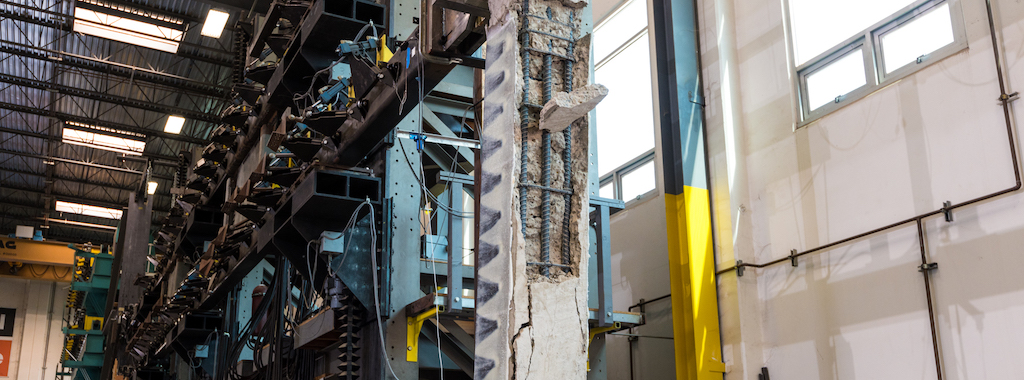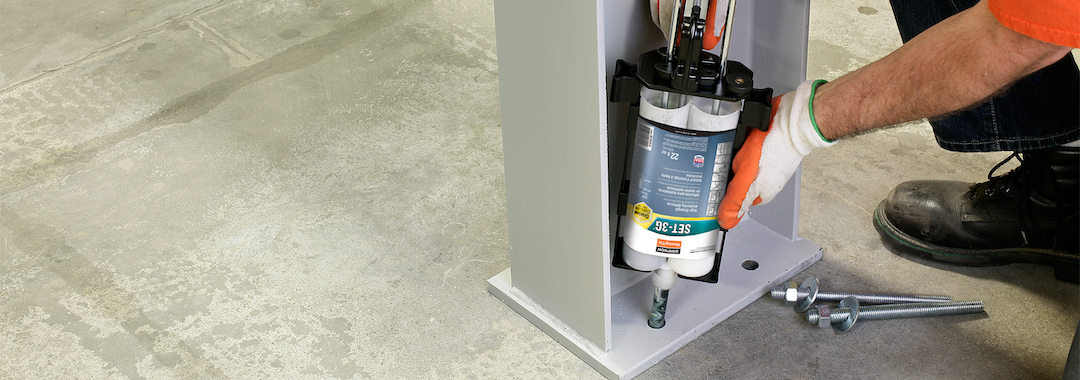As a research partner in the National Hazards Engineering Research Infrastructure (NHERI) TallWood project, Simpson Strong-Tie participated in a series of earthquake shake table tests conducted at the University of California, San Diego (UCSD).
Category: Testing/R&D
Simpson Strong-Tie is constantly testing and innovating.
Innovation Redefined: The Future of Structural Testing with Our Million Pound Rig
The future of full-scale structures testing and product development is here – and it is BIG. Our Tyrell Gilb Research Laboratory built a brand-new Million Pound Rig to help in the testing of our new Yield-Link® brace connection (YLBC), along with our many other products. Hear from Mike Wesson, Engineering Manager, Tyrell Gilb Research Laboratory, about this latest addition to the research lab.
From CEO to Legacy: Welcome to the Karen Colonias Research Lab!
David Huerta, Senior Lab Manager at the Simpson Strong-Tie home office in Pleasanton, California, was present during the renaming of the Karen Colonias Research Laboratory. The lab was renamed in honor of our former CEO, Karen Colonias, who was instrumental in driving our company forward during her 38 years with the company, including 11 as our CEO. David shares his perspective on the lab’s functions and operations, as well as its importance to our company’s legacy.
Take a Tour of Our McKinney R&D Lab
Did you know that Simpson Strong-Tie has a research and development lab in our McKinney, Texas, branch? In the following article, Francisco, the McKinney branch lab manager, talks about the history of this lab and what we do there.
Strategic Alliance with Structural Technologies Brings End-to-End FRP Solutions to Concrete Strengthening and Repair Industry
Simpson Strong-Tie and Structural Technologies formed a strategic alliance for Composite Strengthening Systems™ (CSS) products in 2021. CSS products include fiber-reinforced polymer (FRP) and fabric-reinforced cementitious matrix (FRCM) strengthening systems. Additionally, where CSS products are not a viable solution, the alliance can also offer recommendations and design for other non-CSS or conventional strengthening solutions. This alliance allows each firm to specialize in their areas of expertise:
Providing Performance Data for Shallowly Embedded Anchors
In the last few years, Simpson Strong-Tie has heard from a number of structural engineers expressing frustration with the lack of performance data for shallowly embedded, post-installed anchors (shallow anchors). Engineers of Record (EOR) have identified a common application for shallow anchors as those related to attachment of sill plates for structural and nonstructural wall-to-podium slab connections. One dilemma faced by the EORs originates in their desire to prevent damage to concrete podium slab reinforcement, especially where reinforcement is located close to the slab’s top surface to resist negative bending moments. EORs further indicate that shallow anchors are frequently needed for the following attachments: hanging MEP fixtures; attaching nonstructural components associated with tenant improvements; and anchoring light equipment.
Project Profile: Special Moment Frame Dropped-Beam Solution Saves Day(light) by Preserving Window Openings
Simpson Strong-Tie recently had the opportunity to work with MAK Construction to come up with a rather unique solution for a residential project in Phoenix, Arizona. Our Strong Frame® Moment Frame Selector software was used by the engineer on record, L.R. Nelson Consulting Engineers, LLC, to design this truly “special” special moment frame (SMF). The challenge for this particular moment frame design was figuring out how to work around a large garage door opening on the bottom floor without obstructing the window openings on the next floor, because the standard SMF design would cause the beam to cross right through the middle of the windows as they were situated. The solution required dropping the beam below the top of the columns, something seldom seen in moment frame designs. However, our engineering services, in collaboration with L.R. Nelson Consulting Engineers, were able to determine that dropping the beam to the needed level would be quite feasible in this case, and within 24 hours a new design was sent to the EOR and to the contractor for final approvals, which were granted.
ICC-ES Report Update for Composite Strengthening Systems™
We’re pleased to announce that our Composite Strengthening Systems (CSS) code report, ESR-3403, has been revised to recognize Simpson Strong-Tie fiber-reinforced polymers (FRP) for concrete diaphragm applications. These FRP fabrics can be used to strengthen diaphragms for in-plane shear, flexure (chords), and axial tension (collectors) to resist seismic or wind loading.
Risk-Taking Innovation Leads to New FRP Strengthening Application
At Simpson Strong-Tie, we’re always seeking out new opportunities for innovation while helping customers find solutions to new challenges. In fact, “relentless customer focus” and “risk-taking innovation” are two of our nine company values. These two values recently came into play with a challenge to test our Composite Strengthening Systems™ FRP products in a new application on a 17-foot-tall concrete column.
How Should I Determine a Tension Test Load? Guidelines on Proof Loading Adhesive Anchors
Have you ever been involved on a project where a post-installed anchor failed when loaded? What was the circumstance? Was the anchor installed with incorrect torque or was the hole improperly cleaned, resulting in lower capacities than published? Unfortunately, in the world of concrete anchors, installations are sometimes incorrect as a result of not following instructions. Alternatively, perhaps you’re working on a project where special inspection wasn’t performed as required by the building code. What should be done in these cases?

